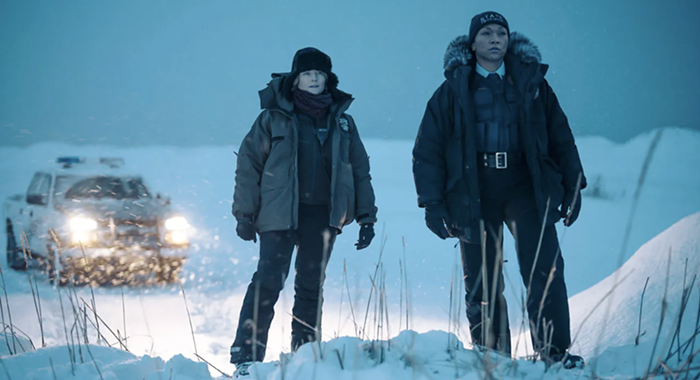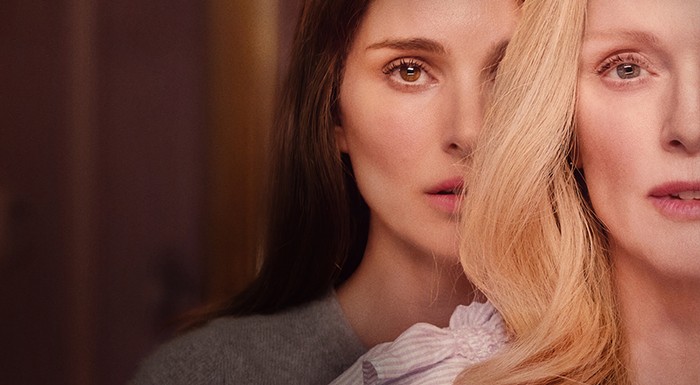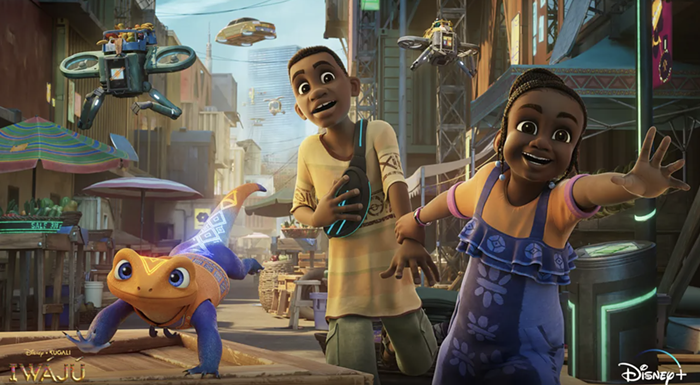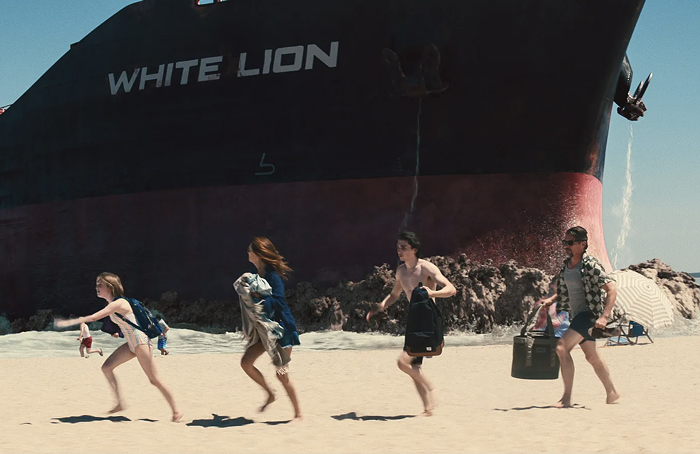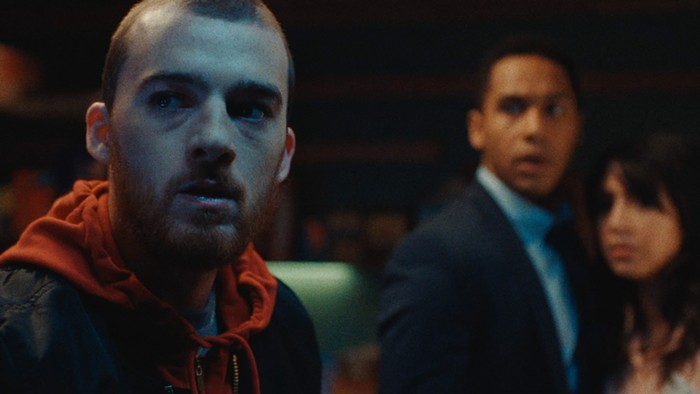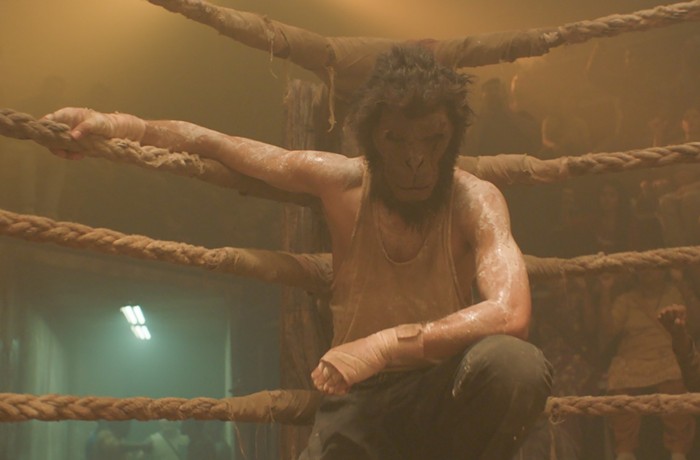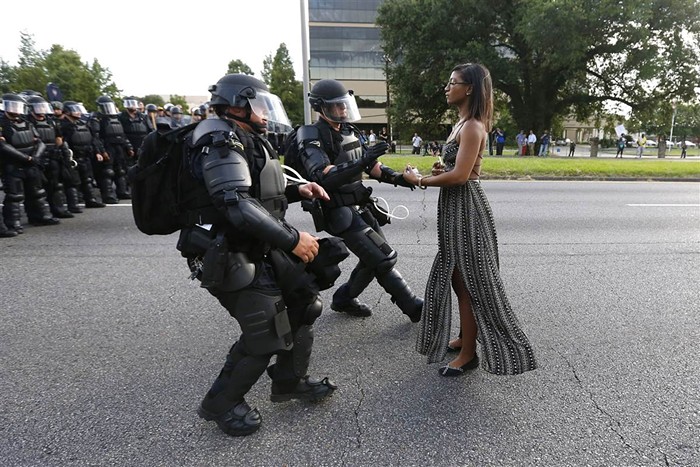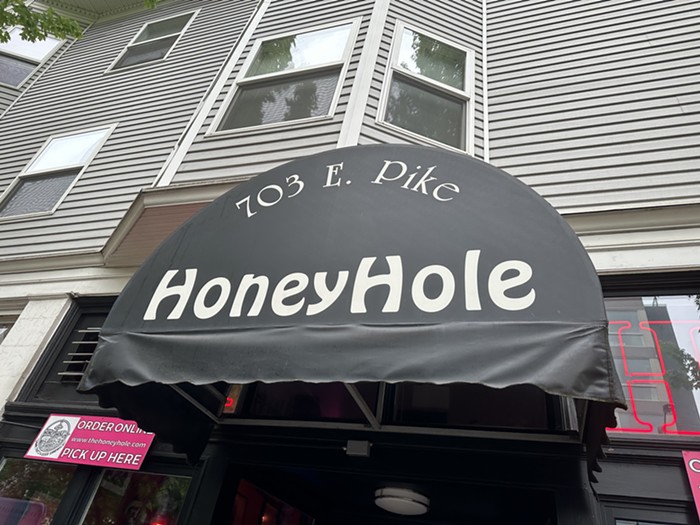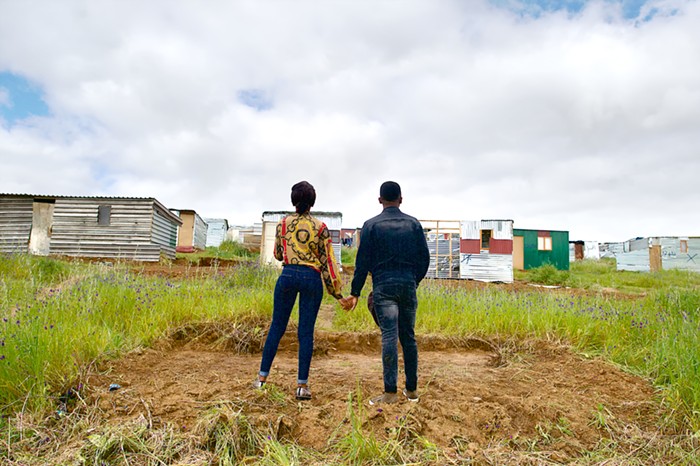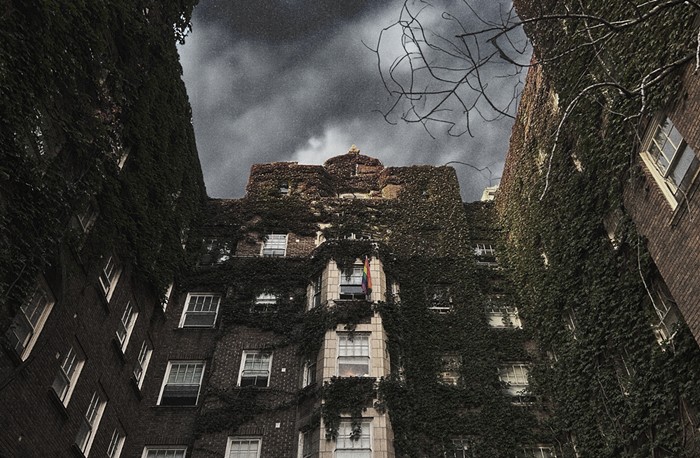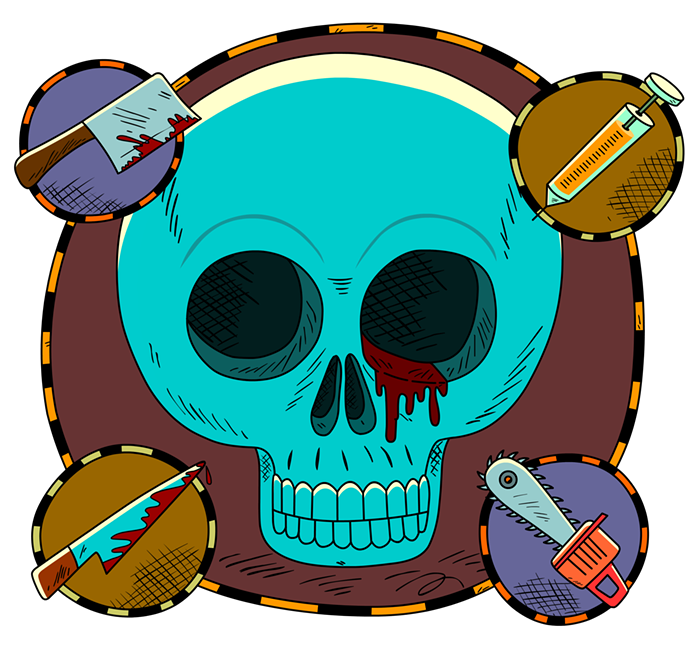
Shoulderpads! Evil schemes! Putting on high fashion to go brawl in the mud! The '80s soap opera Dynasty was all about rich people behaving badly, their dreadful behavior facilitated by their extravagant wealth.
But for years, despite the show’s anything-goes nature, there was one thing that Dynasty couldn’t get away with: showing a happy homosexual. Putting a gay man on one of the most iconic and popular shows of the decade was a long, multi-year fight — both on-screen and behind-the-scenes — but it was nothing compared to the battle it took to keep him there.
The story of Dynasty’s controversial gay son starts back in 1979 with, of all things, the oil crisis. Over the decade, a constellation of political, technical, and economic chaos all combined to suddenly force gas prices sky-high, with shortages producing long lines of cars waiting to refill their tanks for exorbitant prices. That chaos got a group of seasoned TV producers thinking about a new show that explored the stories of the families that controlled America’s energy sources, with the unlikely twist of incorporating storylines from 19th-century novels about tumultuous aristocratic families.
The result was Dynasty, a show about an oil-rich family in Denver where every family member is constantly at each other’s throats. There’s Blake Carrington, the stern father who built himself up from nothing. Fallon, his rebellious daughter, secretly sleeping with the family chauffeur. Alexis, the exiled ex. Krystle, the innocent soon-to-be stepmother with a secret past. And the son, Steven, who’s hiding his homosexuality from his conservative dad.
Steven was designed to be a lightning rod for controversy, both in the fiction of the show and in real life. Marketing material described him as “bound by family. Tempted by a different world. Helpless before his own desires.” There had seldom been any recurring gay characters on primetime TV — there was Jody on Soap, a forgotten barfly on The Corner Bar, and guest-player Lori Shannon as Beverly LaSalle on All in the Family. But they were the very rare exceptions to the rule.
Dynasty’s pilot positions Steven front and center, with a climactic scene in which Blake confronts his son about being gay. He demands that Steven “straighten yourself out,” hurls slurs at him, and insists that Steven never bring homosexuality into the house. It’s a hard scene to watch, but Blake’s cruelty is pretty consistent with the hostility of the time. And in decades past, he probably would have gotten his way. There was so much stigma around homosexuality then that for many queer people, it was simply easier to acquiesce and pretend they’d gone straight — especially around family.
To his credit, Steven refuses to go back in the closet. But Blake’s not through with him yet, especially since (unbeknownst to any of the characters) Steven’s former lover Ted is on his way to Denver to try to win Steven back.
This episode came along at a turning point for queer charcaters on TV. Over the 1970s, there had been a steady rise in gay characters, accompanying the growing queer liberation movement. (Not that it was called that at the time!) But the rise in gay visibility on television ran into a brick wall in late 1980s with the election of Ronald Reagan. Networks saw his landslide victory as a sign that the country’s mood was turning conservative, and ordered TV shows to cut back on queer representation. There were over a dozen gay characters on TV in 1979, but by 1981 there were almost none.
Steven was one of the few who was able to slip in — probably thanks to the clout of the people making the show: Longtime TV producers Richard and Esther Shapiro, and hit-factory Aaron Spelling. They all had a sterling track record of producing programs that were both popular and timely, and even looked at Reagan as a sort of model for the Blake character. Esther wrote about everything they had in common: “A powerful executive married to a devoted woman, with a difficult ex-wife, a sensitive son, a rebellious daughter.”
Al Corley, the actor who played Steven, was enthusiastic about the opportunity. He’d appeared on a gay-ish episode of The Love Boat a year earlier, and had lots of ideas for where he could take one of TV’s only gay characters.
And then there was Newt Dieter, a gay community leader who was often sought out by TV producers to vet their scripts. His job was to make sure Dynasty didn’t deploy any offensive tropes; for example, he advocated for a reduction in the number of f-slurs, as well as removal of the somewhat less egregious phrase “gay schmay.”
So when this pilot finally aired, it was with a lot of deliberate work on the part of creators, the producer, the actor, and even a gay community leader to make sure they got the Steven character right. And because of the sudden reluctance to put gay characters on TV in the wake of Reagan’s election, Dynasty wound up being one of the only shows of its time to even attempt a storyline like this.
But soon it became clear that there were limits to what ABC would let the show get away with. Network censor Alfred Schneider told Spelling that Steven wasn’t allowed to be physically affectionate with another man; that resulted in bizarre scenes like a romantic encounter in which both characters quote poetry at each other, fully clothed, from across a room.
Dynasty freely showed Steven getting gay bashed, he just couldn’t have have a gay kiss. And then, at the end of the season, Blake discovers Steven and Ted in an embrace. Not knowing that they had just agreed to break up, Blake throws Ted to the side, knocking him into a fireplace where he hits his head and dies.
Season 1 ends with Blake on trial for murder, which provides ample opportunity for him to reiterate his homophobia. The show’s setting up a real-life legal tactic known as a “gay panic defense,” whereby a person argues that they were so upset by the presence of a homosexual that they became, for legal purposes, temporarily insane, and therefore no longer legally responsible for their actions. This defense was used for decades — it was the basis of the defense in the case that inspired the movie Boys Don’t Cry. It was used in the Matthew Shepard murder trial. A study in 2020 found that gay and trans panic defenses resulted in courts reducing charges in 33% of cases where it was used. Even today, only a handful of states have banned it.
Blake was originally going to be found not guilty until Newt Dieter intervened, aghast that the show would depict the killing of a gay man as having zero consequences. The show was hastily re-written for Blake to receive a guilty verdict … and then immediate probation so he can return home.
Blake’s desire to straighten Steven out continues over the next season, and a similar campaign was underway behind the scenes at ABC. Executives noted that Steven appealed to women viewers, and wanted the producers to end the gay storylines and pair him with women — essentially they wanted a copy of the popular Bo character on CBS’s Dukes of Hazzard.
Actor Al Corley hated that. He wanted a storyline in which Steven becomes a teacher and buts heads with bigoted parents. It sounds like a great idea, but the network wasn’t interested; and in Season 3, his character is apparently killed off in an explosion — until he turns up at a hospital, his face mangled and then reconstructed to explain why he is now played by a different actor, Jack Coleman.
Like this post about gay TV history? Read more:
The Story Behind the Gayest Week in TV History How Barney Miller’s Gays Defeated ABC’s Network Censors Why Do Gays Love The Golden Girls? Rita Moreno vs Hollywood: The Other West Side Story Rumble How M*A*S*H Predicted the Rise and Fall of Don't Ask, Don't Tell What Makes Disney Villains So Gay? The Gay Magic of The Nanny The Straightening of Chandler Bing How Bewitched Went Gay Without Ever Saying "Gay"
In Season 3, Steven and Blake find a new source of conflict. During a brief heterosexual experiment, Steven had a baby, and Blake is determined to take custody — he feels that a gay man can’t possibly raise a child.
This is another storyline that reflects reality for queer people in the 1980s. Courts almost universally sided against queer parents in custody cases — often removing kids from loving homes and putting them with hostile relatives, or even in foster care rather than letting them stay with their parents. The justification was often ludicrous; courts sometimes seized children on the pretense that having a lesbian mother would make them the target of jokes. One case hinged on the psychological damage that a lesbian mom supposedly did by dressing her son in a “unisex” t-shirt, whatever that is.
To avoid losing his son, Steven hastily marries a woman, and for a time it looks like Blake is going to get his way — forcing his son to go straight. But that comes with a high price. Steven is furious at Blake now, and it seems as if Blake’s bigotry might’ve driven a permanent wedge between them. That’s where the seeds are planted for the show’s next major gay twist.
By this point, it was 1984, and after being away for a few years, queer characters were starting to find their way back onto television. That year, another Aaron Spelling series, The Love Boat, featured a gay couple; Kate and Allie introduced a lesbian landlady, and even Night Court had a gay episode.
This was happening, in part, because in the last few years gay activism had become much more urgent and visible, particularly around HIV. There were candlelight vigils, AIDS awareness events, and soon protest groups like ACT UP would shut down whole city streets, the New York stock exchange, and government offices. These protests increasingly put queer people front and center — on the news, in politics, and in family settings where they might previously have been closeted.
Reagan’s election in 1980 contributed to a regression back to the old-fashioned way of sweeping social issues and minorities under the rug. But as queer activism got bigger, louder, and more present than ever in American life, and it was getting harder and harder to remain stuck in that old tradition of pretending homosexuality didn’t exist.
By Season 5, it was finally time for Steven to be what the Shapiros had envisioned. He and his wife start drifting apart, and Steven meets a PR executive named Luke (played by Billy Campbell, who was nearly cast as Commander Riker on Star Trek: The Next Generation a few years later).
Steven and Luke grow closer, and soon realize they’ve fallen in love. A recurring gay couple on a primetime show was a big deal — not guest stars, not sassy best friends who are only there to support the straight characters’ stories, but two main characters forming a relationship as part of the core storyline. This was huge. There was just one problem: Blake is starting to suspect something it up between them, and there’s no telling how he’ll react when he finds out.
Meanwhile, the man who partially inspired Blake was grappling with queer issues as well. This was 1985, several years into the HIV epidemic, and Ronald Reagan hadn’t even acknowledged it was happening — in fact, he actually cut funding for public health programs, and the White House vetoed an AIDS plan.
Because HIV was largely affecting gay men, conservatives saw it as an opportunity to ramp up the hostility toward gays. Pat Buchanan, a close Reagan ally, wrote in an op-ed, “The poor homosexuals… they have declared war upon nature, and now nature is exacting an awful retribution.” After he wrote that, Reagan appointed him White House Communications Director.
While activists grew louder and louder, Reagan retreated to that old-fashioned way of dealing with gays — ignore them, hope they’ll go away, and if they don’t, make them suffer. Dramatized on Dynasty, now playing out in real life with a deadly epidemic.
That came to a head in 1985 with a member of the Dynasty cast. Rock Hudson had been diagnosed a year earlier and collapsed as he was trying to get access to an experimental new treatment. Desperate, his staff wrote to the Reagans — old friends of Rock’s from Hollywood — for help. But they turned their back on him, refusing to help. Rock passed away a few weeks later.
Rock was the most famous person to have passed away from HIV-related causes at the time, and his death not only stunned the world but also put a familiar face on what had, for many, only been an abstract problem happening to someone else.
It also prompted major changes in Hollywood, from on-set safety to a wave of new shows and films about the epidemic. It was easy for conservatives like Reagan to ignore HIV, because of who it affected: a group they were used to pushing aside, ignoring, and attacking. But while Reagan and his allies turned their backs, the entertainment industry stepped into the role of educator in the absence of substantive action from the government.
And while Blake was created to reflect conservative values of the early '80s, at this point he starts to diverge from that path. When Steven finally tells his father about his newfound love, Blake recognizes that all his bigotry and anger was only pushing his son away. Though he might wish his son were straight, he decides to accept him for who he is rather than lose him.
Luke is killed at the start of the next season by gunfire, and Steven struggles to move on. When he meets a closeted gay man named Bart Fallmont, the son of a senator, Steven counsels him to give up his secrets and live openly; and in a surprise turnaround, Blake counsels Bart’s father to accept his gay sun. It’s quite the turnaround from where Blake was at the start of the series, when he was willing to commit murder rather than let his son hug another man. Now he not only understands his gay son, but he’s helping other men of his generation to end the bigotry and lies that only served to tear families apart.
At this point, the actor playing Steven started to get tired of the role, and asked to be written off the show. The writers show him feeling discontent, and they have him disappear at the end of Season 8. The show was canceled the following year, leaving unanswered questions about what fate befell the gay son — questions that were finally answered two years later in a reunion special.
We see that Steven and Bart have fallen in love and moved to DC, where they pursue environmental work. When Blake comes to visit, Steven expects some hostility. But instead, Blake is warm toward the couple, and then takes his son aside to ask: “Do you love him?” Steven says that he does, and Blake smiles, says he’s glad, and gives his son a hug. Producer Aaron Spelling remembered Blake’s line as “I’m glad you found someone who loves you as much as I do.”
As the Dynasty reunion comes to a close, we see all the Carringtons together — opulence, drama, shoulderpads, and all, with the gay son and his partner a happy part of the family.
It’s a huge shift from where the show began 12 years earlier, when Blake was prepared to banish his son, kill his boyfriend, and take his child rather than allow homosexuality under his roof. Now, he’s welcoming his son’s partner into the fold. And it’s remarkable that one of the messiest families in America wound up being a better role model for the country than the president of the United States.

